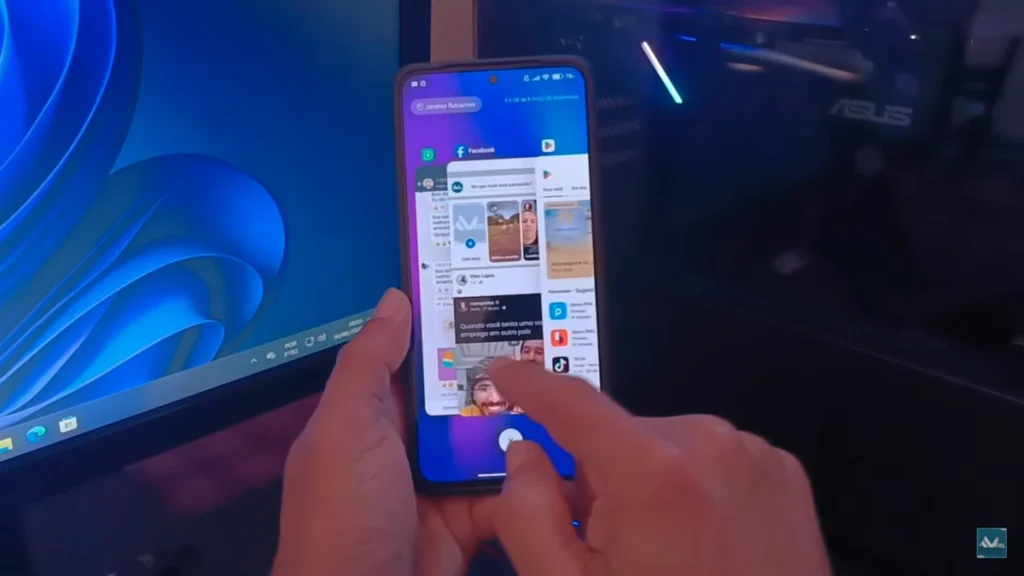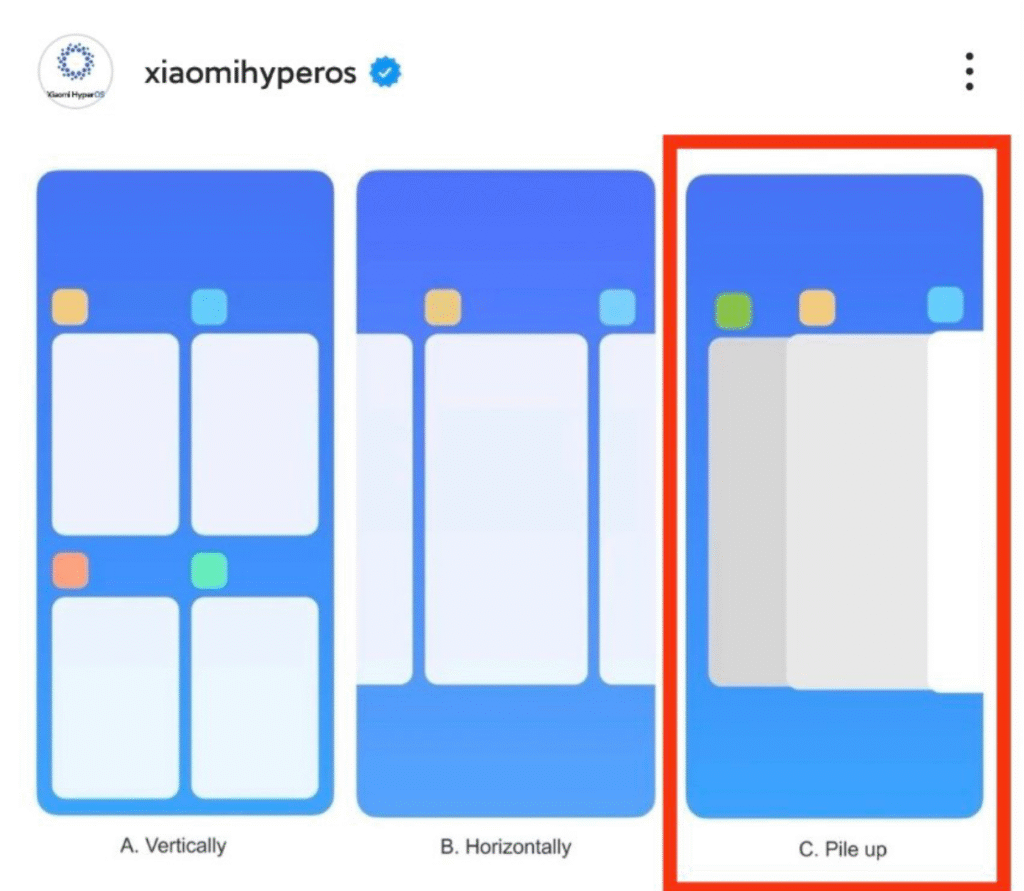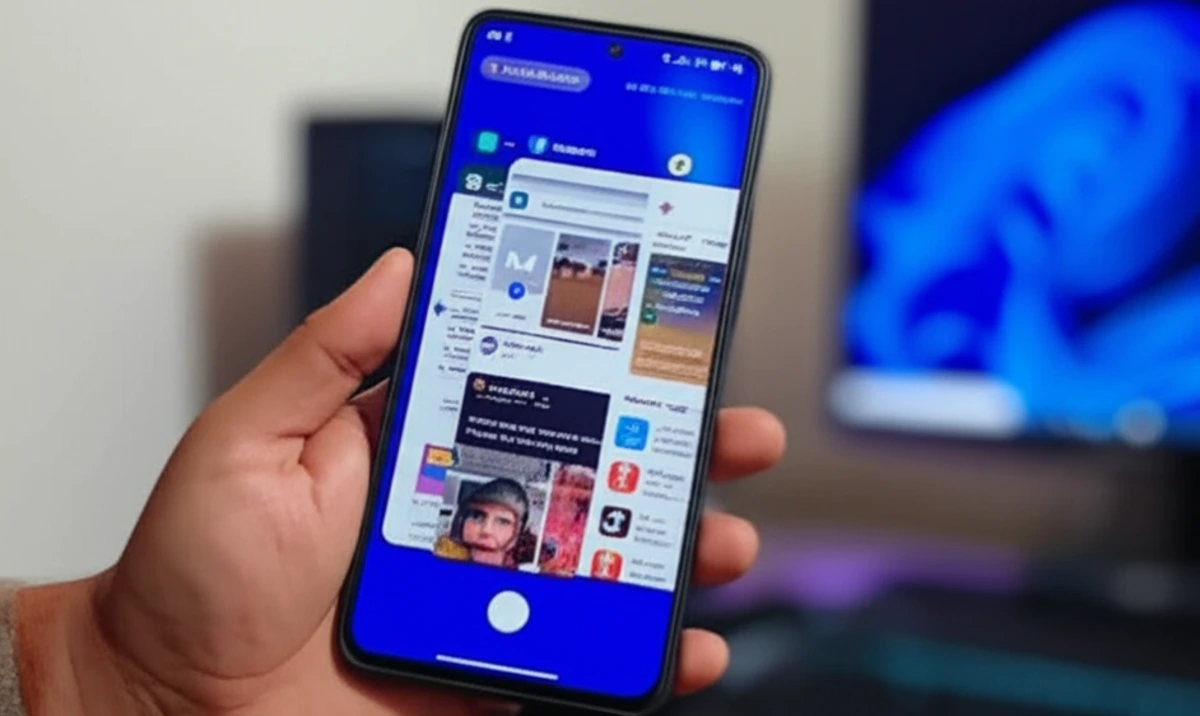Xiaomi HyperOS 3 is finally here? iOS-style recent apps menu, what can we expect?
Have you ever wished your Xiaomi phone could feel as smooth and elegant as an iPhone? Your wait is almost over! After years of promises and delays, Xiaomi is finally ready to deliver something that will transform how you use your Android device.
The upcoming Xiaomi HyperOS 3 update includes the most requested feature from users worldwide: an iOS-style recent apps menu. This isn’t just another regular update. It’s Xiaomi’s answer to millions of users who wanted iPhone-like fluidity and visual beauty on their Android smartphones.
Picture this: switching between your open apps with the same smoothness and elegance you see on expensive iPhones. This dream is becoming reality. Recent system leaks confirm that Xiaomi has finally decided to deliver what they promised so long ago.

Why Is This Update So Important for You?
For years, Xiaomi, Redmi, and POCO phone users dreamed of a more beautiful and functional interface for switching between apps. The current system works fine, but it never had the visual elegance everyone wanted. Many people bought iPhones just for this refined experience.
Now, with HyperOS 3, you won’t need to spend thousands of dollars on an iPhone to get that premium experience. Your Xiaomi phone, which cost much less, will offer the same fluidity and visual beauty when switching between apps.
The difference will be immediately noticeable. Instead of traditional square thumbnails stacked up, you’ll have floating, elegant cards, exactly like on modern iPhones. Each app will appear as an individual, well-organized window, making navigation easier and the entire experience more intuitive.
The transformation goes beyond just looks. Your daily phone usage will become more enjoyable and efficient. When you need to find a specific app among many open ones, the new card-based view makes identification much faster and clearer.

How Do We Know This Is Real?
The leaks leave no doubt. HyperOS 3 system files discovered by experts reveal something very interesting: a code reference called “IOS_SCHEME.” This is practically official confirmation that the iOS-style recent apps menu is really coming.
This information came from reliable sources who always get their Xiaomi update predictions right. The user “Don’t know porridge” from Weibo, known for leaking accurate information about Xiaomi systems, discovered these revealing files.
There are already videos demonstrating how this new interface works. During beta testing, I was able to see firsthand how the system behaves on the Redmi Note 13 4G, and the transformation is remarkable, highlighting Xiaomi’s commitment to this functionality. At the time, as the author, I not only presented the iOS-style recent apps menu running on the Redmi Note 13 4G, but also provided a complete tutorial on how to sign up for the beta testing program for early access to the new versions.
Understanding the broader context of Xiaomi’s system evolution helps appreciate this milestone. The company has been working on comprehensive HyperOS 2.2 hidden tricks that complement the visual improvements coming with HyperOS 3. These foundational improvements in the current system create the perfect groundwork for the iOS-style interface.
When Can You Use This New Feature?
The wait is almost over! According to the latest information, HyperOS 3 should arrive in September this year. This means in just a few weeks, you’ll be able to experience this revolutionary interface on your own phone.
The system will be based on Android 15 and Android 16, ensuring you get not just iOS visual beauty, but also all the security and performance of the most modern Android systems. It’s like having the best of both worlds in a single device.
The beta testing phase will likely begin a few weeks before the official release, giving enthusiastic users a chance to try the new features early. This follows Xiaomi’s typical release pattern of thorough testing before wide deployment.
Expected Release Timeline
| Period | Version | Main Features | Devices |
|---|---|---|---|
| September 2025 | HyperOS 3.0 Beta | iOS-style Recent Apps, New Animations | Selected Flagship Devices |
| October 2025 | HyperOS 3.0 Stable | Complete Interface, Performance Optimizations | Xiaomi/Redmi/POCO Flagships |
| November 2025 | HyperOS 3.1 | Bug Fixes and Improvements | Expansion to More Models |
| December 2025 | HyperOS 3.2 | Additional Features | Full Compatible Device Line |
What Will Change in Your Daily Experience?
Get ready for a complete transformation in how you use your phone. The new recent apps menu isn’t just a visual change – it’s a revolution in your device’s usability.
When you want to switch between apps, instead of seeing those traditional tiny thumbnails stacked up, you’ll see elegant cards floating on your screen. Each app will appear as an individual window, well-organized and easy to identify.
The animations will be much smoother and more natural. When you swipe between apps, the transition will be as fluid as silk, exactly like what happens on expensive iPhones. This smoothness isn’t just beautiful to look at – it makes using your phone much more pleasant and efficient.
Practical Benefits for You
Faster Navigation: Finding the app you want becomes much easier with the new card-based view.
Premium Experience: Your Xiaomi phone will have the same visual elegance as expensive Apple devices.
Better Organization: Apps will be arranged more clearly and intuitively.
Fluid Animations: Every movement in the interface will be smooth and responsive.
The enhanced user experience extends beyond just switching apps. The entire system feels more cohesive and polished, creating a premium feel that rivals much more expensive devices.
Why Did Xiaomi Take So Long to Release This?
Creating the iOS-style recent apps menu required extensive system rewrites and optimization. Xiaomi needed to ensure the new interface worked stably and efficiently without compromising performance. This complex technical work explains why the feature didn’t arrive with HyperOS 2.
The company also wanted to perfect the experience rather than rush it to market. They gathered user feedback during the HyperOS 1 development phase and incorporated suggestions into the final design. This attention to detail means you’re getting a thoroughly tested and refined feature.
Technical challenges included ensuring compatibility across different device specifications and maintaining smooth performance on older hardware. Xiaomi’s commitment to supporting devices for several years after launch meant they couldn’t create a feature that only worked on the newest phones.
The development team also coordinated with the broader Android ecosystem changes, ensuring HyperOS 3 would work seamlessly with Android 15 and 16 features. This integration work required additional time but results in a more stable and future-proof system.
Which Devices Will Receive the Update?
While Xiaomi hasn’t released the complete list yet, devices from the Xiaomi, Redmi, and POCO lines launched in the last two years are expected to be compatible. Flagships like Xiaomi 13, Redmi Note 12, and POCO F5 will certainly be included.
Older devices may also receive the update, depending on their technical specifications and processing capabilities. Xiaomi has a history of supporting their devices for several years after launch, so many users with slightly older phones shouldn’t worry.
The Redmi Note 13 4G HyperOS 2.2 update demonstrates Xiaomi’s commitment to bringing new features to mid-range devices, not just flagships. Similarly, the POCO F5 HyperOS 2.2 global stable update shows how the company ensures all product lines benefit from system improvements.
Currently, 20 Xiaomi, Redmi, and POCO devices are confirmed ready for the latest updates, indicating strong support across the device ecosystem.
What to Expect Beyond the Recent Apps Menu?
HyperOS 3 brings more than just the iOS-style menu. The update includes significant improvements in system animations, new customization features, and performance optimizations that will make your phone faster and more efficient.
Opening and closing app animations have been completely redesigned to be more natural and fluid. The system also gains new visual effects that make the usage experience more engaging and modern.
Artificial intelligence features have also been enhanced, allowing the system to learn your usage habits and automatically optimize performance based on your daily patterns. This smart optimization happens in the background, ensuring your most-used apps load faster and your battery lasts longer.
The broader ecosystem improvements include new exclusive HyperOS 2.2 apps that integrate seamlessly with the new interface design. Additionally, anticipation builds for HyperOS 2.3 with Android 16 integration, though some users should be aware that 31 phones will be left out of Android 16 HyperOS 3 support due to hardware limitations.
Enhanced Features Coming with HyperOS 3
The system-wide improvements create a cohesive experience where every interaction feels polished and intentional. From lock screen customizations to notification handling, HyperOS 3 represents a maturation of Xiaomi’s software vision.
Privacy and security enhancements built on Android 15/16 foundations provide better app permission controls and data protection. These improvements happen transparently, giving you peace of mind without complicating your daily usage.
FAQ
When will HyperOS 3 be officially released? Launch is scheduled for September 2025, starting with beta version for selected devices.
Will my older Xiaomi phone receive this update? Devices launched in the last 2-3 years will likely receive it, but the official list hasn’t been published yet.
Will the iOS recent apps menu work exactly like iPhone? Yes, the functionality will be very similar, maintaining the fluidity and visual elegance characteristic of Apple devices.
Can I test the feature before official release? Yes, through Xiaomi’s beta program, which usually opens registration a few weeks before launch.
Will the update be free? Yes, like all Xiaomi system updates, HyperOS 3 will be completely free for compatible devices.
Conclusion: A New Era for Xiaomi Devices
HyperOS 3 represents much more than a simple system update. It’s the materialization of a dream that millions of Android users have nurtured for years: having iOS elegance and fluidity on devices with better value for money.
With the iOS-style recent apps menu finally arriving, Xiaomi proves they’re committed to offering the best possible experience for their users. You no longer need to spend a fortune on an iPhone to have a premium, functional interface.
The company demonstrates they listened to their users and worked tirelessly to deliver exactly what they asked for. The result will be a usage experience that rivals the most expensive devices on the market, while maintaining the excellent value that made Xiaomi so popular.
Prepare for a revolution in how you use your smartphone. In September, your mobile experience will never be the same.
Key Points About HyperOS 3
• iOS-Style Interface: Recent apps menu identical to iPhone officially arriving • September Launch: Beta version expected September 2025 with definitive stability • Android 15/16 Foundation: Solid base with the most modern and secure Android systems
• Fluid Animations: Smooth, natural transitions throughout the operating system • Wide Compatibility: Support for recent Xiaomi, Redmi, and POCO devices • Free Update: Completely free update for all compatible devices • Optimized Performance: Speed improvements and energy efficiency enhancements • Advanced Customization: New visual customization features and themes • AI Integration: Smart optimization based on usage patterns • Premium Experience: iPhone-like elegance at Android device prices
Fresh content for you! Valberth Vas updated this content on July 23, 2025. Don’t miss the latest tips and news: join our Telegram community now and join us!

Valberth Vas, the expert behind TecnoVas Innovate, is the author of the company’s reviews and guides. His vast experience in the world of technology, with a particular focus on Xiaomi’s innovations, allows him to offer in-depth insights and clear guidance on the current technological landscape.

